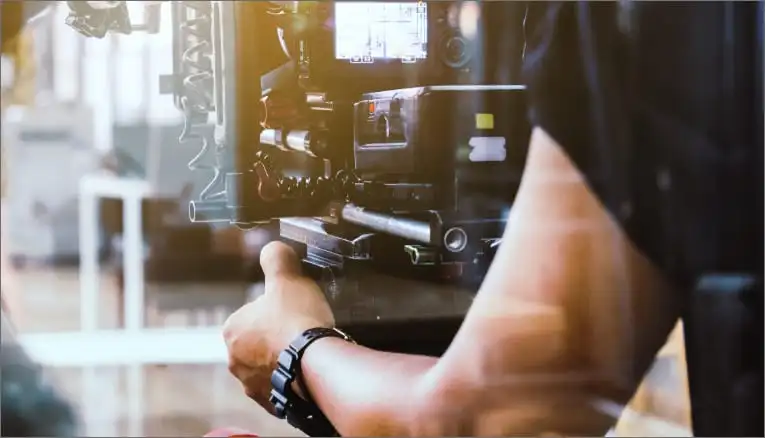Autodesk Maya is a powerful software used by professionals in the 3D animation industry to create stunning visual effects and animations. Understanding collision and constraints within Autodesk Maya is crucial for creating realistic and dynamic animations.
In this comprehensive guide, we will discuss the intricacies of collision and constraints in Autodesk Maya, providing you with the knowledge and skills to master these essential aspects of 3D animation.
Collision in Autodesk Maya
Collision detection is a fundamental concept in 3D animation that simulates the interaction between objects in a virtual environment. In Autodesk Maya, collision detection allows animators to create realistic interactions between objects, characters, and environments. By defining collision boundaries and constraints, animators can ensure that objects interact believably within the animated scene.
One of the key tools for managing collision in Autodesk Maya is the nCloth system. nCloth is a dynamic simulation tool that enables animators to simulate the physical properties of cloth and other deformable surfaces. By applying nCloth properties to objects, animators can create realistic cloth simulations that respond to forces such as gravity, wind, and collisions with other objects.
Constraints in Autodesk Maya
Constraints are another essential feature in Autodesk Maya that allows animators to control the movement and interaction of objects within a scene. Constraints define relationships between objects, such as parent-child hierarchies, point constraints, and aim constraints. By applying constraints to objects, animators can create complex animations with precise control over object interactions.
One of the most commonly used constraints in Autodesk Maya is the parent constraint, which allows animators to link the movement of one object to another. By setting up parent constraints, animators can create complex animations where objects follow the movement of a parent object while maintaining their individual properties.
Collision and Constraints Workflow
To effectively utilize collision and constraints in Autodesk Maya, animators must follow a structured workflow that ensures the seamless integration of these elements into their animations. Here are some key steps to consider when working with collision and constraints in Autodesk Maya:
- Define Collision Boundaries: Before simulating collisions, it is essential to define collision boundaries for objects in the scene. This involves setting up collision objects and specifying their properties, such as friction, bounce, and mass.
- Simulate Collisions: Once collision boundaries are defined, animators can simulate collisions between objects using tools like nCloth or rigid body dynamics. This step allows animators to preview how objects interact within the scene and make adjustments as needed.
- Apply Constraints: After defining collision boundaries, animators can apply constraints to objects to control their movement and interactions. Constraints can be used to create realistic animations, such as characters picking up objects or objects following a predefined path.
- Refine Animations: Throughout the animation process, animators should continuously refine their animations by adjusting collision properties and constraints to achieve the desired effect. This iterative process allows animators to fine-tune their animations for maximum realism and impact.
By following these steps and incorporating collision and constraints effectively into their animations, animators can create visually stunning and dynamic 3D animations that captivate audiences and bring their creative visions to life.
Top 10 Jobs in the Animation Industry
The animation industry offers a wide range of career opportunities for talented individuals with skills in 3D animation, visual effects, and character animation. Here are ten of the top jobs in the animation industry that you can pursue with expertise in Autodesk Maya and other animation tools:
- Character Animator: Character animators bring animated characters to life through movement, expressions, and gestures. They work closely with directors and animators to create believable and engaging characters for films, TV shows, and video games.
- Visual Effects Artist: Visual effects artists create stunning visual effects for films, TV shows, and commercials using a combination of live-action footage and computer-generated imagery. They use software like Autodesk Maya to create realistic simulations of natural phenomena, such as fire, water, and explosions.
- 3D Modeler: 3D modelers create detailed 3D models of characters, props, and environments for use in animations, games, and virtual reality experiences. They use software like Autodesk Maya to sculpt, texture, and rig 3D models that meet the creative requirements of a project.
- Storyboard Artist: Storyboard artists create visual sequences that outline the key shots and scenes of an animation or film. They work closely with directors and animators to translate scripts and concepts into visual storytelling that guides the production process.
- Lighting Artist: Lighting artists are responsible for creating realistic lighting effects in animated scenes to enhance mood, atmosphere, and visual appeal. They use software like Autodesk Maya to set up virtual lights, shadows, and reflections that bring animations to life.
- Rigging Artist: Rigging artists create complex skeletal structures for characters and objects in animations, allowing them to move and deform realistically. They use software like Autodesk Maya to set up rigging systems that enable animators to pose and animate characters with precision.
- Texture Artist: Texture artists create detailed textures and materials for 3D models, enhancing their realism and visual appeal. They use software like Autodesk Maya to paint textures, apply shaders, and map textures onto 3D models to achieve the desired look and feel.
- Simulation Artist: Simulation artists create realistic simulations of natural phenomena, such as cloth, hair, fluids, and particles, using software like Autodesk Maya. They use simulation tools to generate dynamic effects that add depth and realism to animated scenes.
- Motion Graphics Designer: Motion graphics designers create animated graphics and visual effects for films, TV shows, commercials, and online content. They use software like Autodesk Maya to design and animate motion graphics that communicate information, enhance storytelling, and engage audiences.
- Compositing Artist: Compositing artists combine multiple visual elements, such as live-action footage, CGI, and special effects, to create seamless and cohesive images. They use software like Autodesk Maya to integrate elements, adjust colors, and add effects that enhance the final look of animated scenes.
By pursuing a career in one of these top jobs in the animation industry, you can leverage your skills in Autodesk Maya and other animation tools to create compelling and impactful animations that entertain and inspire audiences around the world.
Conclusion
By mastering collision and constraints in Autodesk Maya and pursuing opportunities in the animation industry, you can unleash your creativity, showcase your talent, and build a successful career in the dynamic world of animation.
Key Takeaways
- Mastering collision and constraints in Autodesk Maya is crucial for realistic, dynamic animations.
- Understanding collision detection and constraints helps animators create visually stunning effects.
- A structured workflow includes defining collision boundaries, simulating collisions, applying constraints, and refining animations.
- This workflow results in captivating 3D animations that showcase animators’ skills.
- Exploring the top 10 jobs in the animation industry highlights career opportunities for Autodesk Maya experts.
- Roles include character animators and visual effects artists.
- These roles allow animators to create engaging and impactful animations.
To further enhance your skills and expertise in 3D animation, consider taking the “NYU Animation Industry Essentials” online course and certificate program offered by Yellowbrick. This comprehensive program will provide you with valuable insights, industry knowledge, and practical skills to excel in the competitive animation industry.








